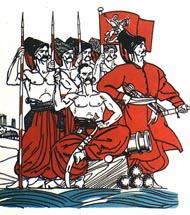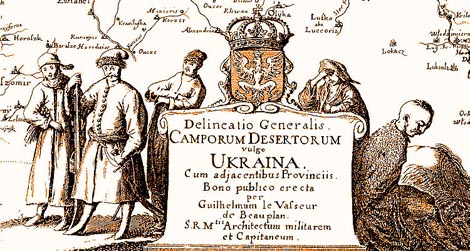(B2-4) "The Ukrainian Bastion" – the Bulwark of Europe and antemurale christianitatis. The Nationalisation of a Myth.

The study investigates the origin, development and the modern instrumentalisation, in regard to both religion and politics, of the myth of antemurale christianitatis in Ukrainian history and its present state. The underlying proposition is that today, “Christian bastion” describes a political myth which evolved from Ukraine’s complex marginality and which, as an explanatory and legitimation strategy, has considerably contributed to the formation of the Ukrainian national self-conception. The project traces how the late medieval notion of an antemurale christianitatis changed to a political myth in the Ukrainian region in the course of its historical development; a myth which, in the middle of the 19th century, started to turn into a central component of nation building.
Compared to Croatia, Hungary or Poland – themselves historical supporters of a “stronghold” ideology – two specifically Ukrainian topoi can be identified in the antemurale myth:
- With regard to the religious factor, the Ukrainian situation is considerably more complex than in other countries. The churches of the Byzantian rites dominate in the history of Ukraine, not those of the Latin rites. The role of the Orthodox and the Greek Catholic Churches in the formation of marginality myths is inevitably more complex than in Catholic countries. The central question here is whether Orthodox regions with their anti-Ottoman “protective barrier function” are regarded as being on a par with Catholic countries.
- Another characteristic of the Ukrainian version of the “pre-mural myth” lies in the historical conjunction with the Cossack myth. This is a central element of the specific reformulation of the antemurale myth and forms an ever recurring core component of the current historical narrative of the Ukraine.

Against this backdrop, one of the main objectives of this research project is the investigation of the relationships between the described mythological elements including their symbolic and visual representations (in monuments, fictional texts, celebrations etc.) and the formation of a Ukrainian national ideology.
Chronologically, the project covers the period from the end of the 16th century up to the present. It is divided into three parts.
- The first part deals with the appearance of the most important forms of expression for the Cossack “bastion” myth from the end of the 16th to the early 18th century. Research on this part has already been completed for the most part; some results have already been published.
- The second key period covers the so-called “long 19th century” from the first literary texts on the topic of Ukrainian nationality at the end of the 18th century to World War I. During this time, the antemurale myth constituted an important element in the national ideology. Evidently, different groups of Ukrainian intellectuals and church dignitaries suggested new priorities in the interpretation of the “Ukrainian Bastion” – both in the Russian Empire and in Austria-Hungary during the period of the “national resurrection” from the mid-19th to the early 20th century. To hold together parts of the Ukraine which were drifting apart in their ideological perspectives, the significance of the anti-Turkish component was downgraded, for instance. Instead, priority was given to the idea of the “Cossack” Ukrainian people which had to accomplish the special mission of defending the religious values of eastern Christianity and the European civilization as a whole.
- The analysis of the third period – from the middle of the 20th century to the present – evaluates current Ukrainian debates in political, intellectual cultural and church circles on questions of historical myths, the affiliation with Europe and religious and national identities.
The Project is part of interconnecting platform H Cultural Ambiguity and coordinated project group Secularisation and sacralisation of media.

